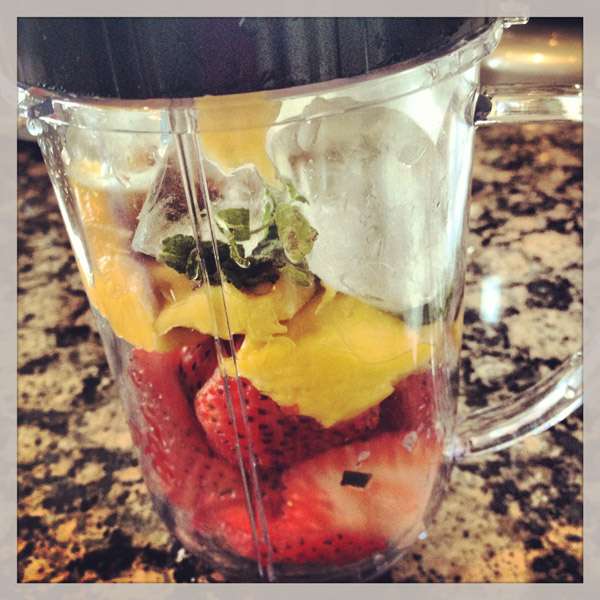 BY CARLYE WAXMAN RD, RDN | There’s no debate about what constitutes the full biological value of vitamins and minerals in your fruits and vegetables. In any form, these low-calorie foods aid in weight loss — but when vegetables are cooked, we know there is some loss of their vitamins and minerals. This could be the biggest reason that the raw foods diet became popular and widespread. So how much of these vitamins and minerals do we really need….and how crazy should we get about maximizing them?
BY CARLYE WAXMAN RD, RDN | There’s no debate about what constitutes the full biological value of vitamins and minerals in your fruits and vegetables. In any form, these low-calorie foods aid in weight loss — but when vegetables are cooked, we know there is some loss of their vitamins and minerals. This could be the biggest reason that the raw foods diet became popular and widespread. So how much of these vitamins and minerals do we really need….and how crazy should we get about maximizing them?
Though I’ve worked in the field of dietetics for the past five years, I’ve just recently started drinking fruits and vegetables. As a former firm believer in eating your foods instead of drinking them, I now have a newfound appreciation for vitamin-rich and slim-feeling shakes. They not only make me feel “healthier,” but also start my day off right on the weekend.
Before I go into my secret smoothie recipes, I’d like to break down the difference between (and the relative merits of) juicing and blending — a debate I had during a random dinner conversation amongst nutrition enthusiasts. It all started with wedding gifts of a juicer and a Magic Bullet (whose long-running infomercial most late night or weekend couch potatoes have seen by now). The couple wasn’t sure which contraption to keep.
My Bullet, thanks to my cousin who apparently had no use for it, has become my new favorite appliance. Though not a “real juicer,” it can pulverize my spinach and kale (which makes it taste creamy, as opposed to frothy). I feel bad about the left-behind pulp, so I add that back in after. I’m very happy with this — and the fact that it fits very snugly behind my Keurig machine in my two-by-two kitchen.
So clearly, I was a bit biased during this debate. The others at the table started talking about the benefits of juicing. While the newlyweds were waffling between their juicer or their Bullet, I was thinking that the former — a huge, expensive machine — must have a healthy purpose, right? The answer to that depends on what you are trying to get out of your fruits and vegetables.
By far, blending is the best at delivering the most nutrients and fiber. It also promotes satiety and weight loss. Blending does introduce some oxygen and heat, so this method can decrease the amount of Vitamin C and some B vitamins. But how much do we actually need in our bodies? One cup of carrots alone has 407.6 percent of your Vitamin C needs, so I think you’re okay. Some super foods you can have in large quantities, like spinach and kale. With only 15-30 calories in two cups of these greens, you’re getting a very large amount of fiber, iron, Vitamin A and C.
When you juice, fiber and some nutrients are removed. This can promote overeating, as we don’t get full on the sugar of the fruit and vegetables. In fact, that mechanism will spike your blood sugar levels — which isn’t the best for your body, and definitely not good if you are a diabetic. The calories are concentrated when juicing, especially if you use more fruit than vegetables, and can promote weight gain. The only benefit I can see with juicing is that if you can’t have fiber due to specific diseases like Crohn’s Disease, diverticulitis, or irritable bowel syndrome, juicing can be a good way for you to get vegetables and fruit into your diet. Please note, taking out fiber does not make vitamin and mineral absorption more prevalent. It makes sugar absorb more quickly into the bloodstream, which is not the same thing.
I’m more of a “weekend” vegetable drinker. On the weekdays, I have a hard time parting with my beloved coffee in my one free hand. I attempted this on one occasion, and drank them both interchangeably — trying to enjoy both the coffee while it was hot and the green giant while it was cold. It was disastrous, and I annoyed a lot of subway commuters when swiping my MetroCard. Perhaps when I live in a less urban area, I can commute with a car and therefore not have to make such a drastic decision between the two beverages.
Having the routine of a large, ice cold vegetable smoothie and a full workout before noon keeps me fit on the weekends and inspires me to eat healthier throughout the day. I hope this message serves as the same motivation for you. Below are my “Secret Smoothie Combos.” Not only a foodie, but also a food expert, I know what vitamins and minerals can do together in the correct combination — and with that in mind, I’ve made these drinks flavorful and functional.
THE GREEN GIANT
This one has two things that go together like peanut butter and jelly: Vitamin C and iron. Vitamin C is iron’s BFF. It makes the iron more biologically available (and iron is responsible for increasing your blood oxygen, giving you more energy). You’ll feel like a giant after this drink, but won’t look like one.
· 3 cups of spinach (about 40% of your day’s worth of iron)
· 2 tbsp. lemon juice
· 1 orange, without pits — squeeze first, remove pits, blend (over 100% of your day’s worth of Vitamin C)
· 8 ice cubes
· 5 fresh mint leaves
GREEN APPLE GREENS
Vitamin A is essential for immunity and bone development. High levels of this in your body can reduce the risk of several chronic diseases. It’s great for your cell growth and vision. Since Vitamin A is a fat-soluble vitamin, you should maximize its absorption by combining it with a healthy fat, like nuts!
· 2 cups of Kale (>300% of you day’s worth of Vitamin A)
· 1 green apple
· 14 almonds
· 1 oz. of apple juice
· 8 ice cubes
· 5 fresh mint leaves
CARROT GINGER NUT
For a more “nutrient rich” option, which works well as a lunchtime smoothie, I’ve added some magnesium, protein and beta-carotene. A high intake of magnesium can give you greater bone density. Magnesium works in muscle contraction as the relaxer, so it’s good for the heart.
· 2 large carrots
· 1 celery stalk
· 14 walnut halves
· 2 tbsp. fresh ginger
· 2 tbsp. lemon juice
· 1 orange, juiced seeded and added to blender
· 8 ice cubes
SIMPLE STRAWBERRY SMOOTHIE
Protein is proven to keep you full and focused, and it helps achieve weight loss. The added magnesium from almonds will aid with cell production, while protein contributes to the repair of body tissue. Drink this after your workout, for maximum effect!
· ½ tbsp. agave nectar syrup
· 1 cup of fresh or frozen strawberries
· ½ mango
· 1 cup of FAGE 0% Total Greek Yogurt
· ½ cup skim milk
· 14 almonds
· 8 large ice cubes
· 5 fresh mint leaves
BLUE COLD BLUSTER
Sometimes when I feel like I’m getting sick, I try to maximize my Vitamin C. Strawberries have a very high amount — but combining them with other berries and lemon breaks down kale’s bitterness, and makes a naturally sweet-tasting shake!
· 1 cup of blueberries (15% of your day’s worth of Vitamin C
· 8 strawberries (>100% of your days worth of Vitamin C)
· 2 cups of kale (90% of your days worth of Vitamin C)
· 2 tbsp lemon juice
· ½ tbsp. agave nectar
· 8 large ice cubes
Carlye Waxman is a Registered Dietitian living in NYC. For free recipes, nutrition tips and smoothies, visit SweetNutritionNYC.com and sign up for her newsletter.




































